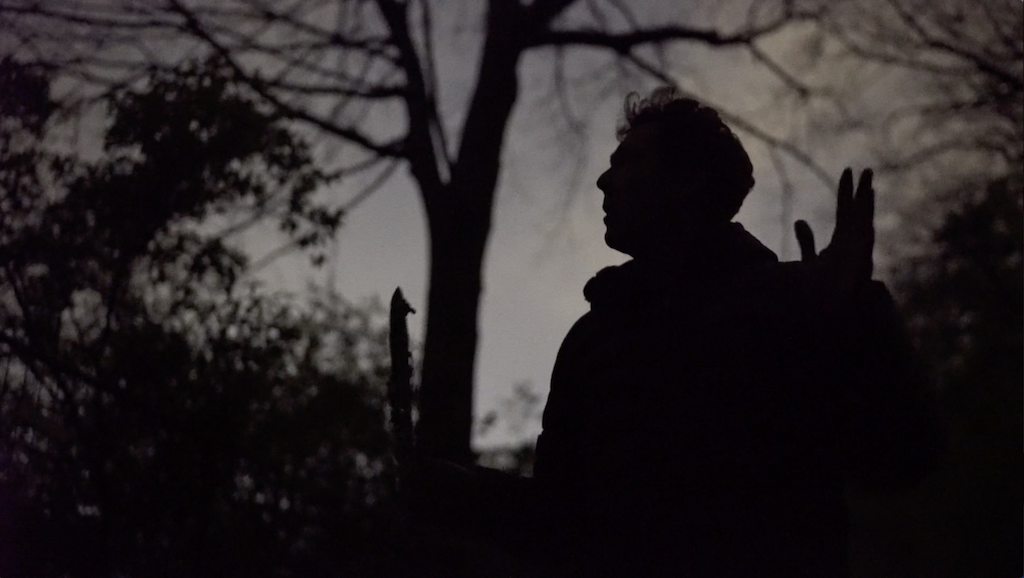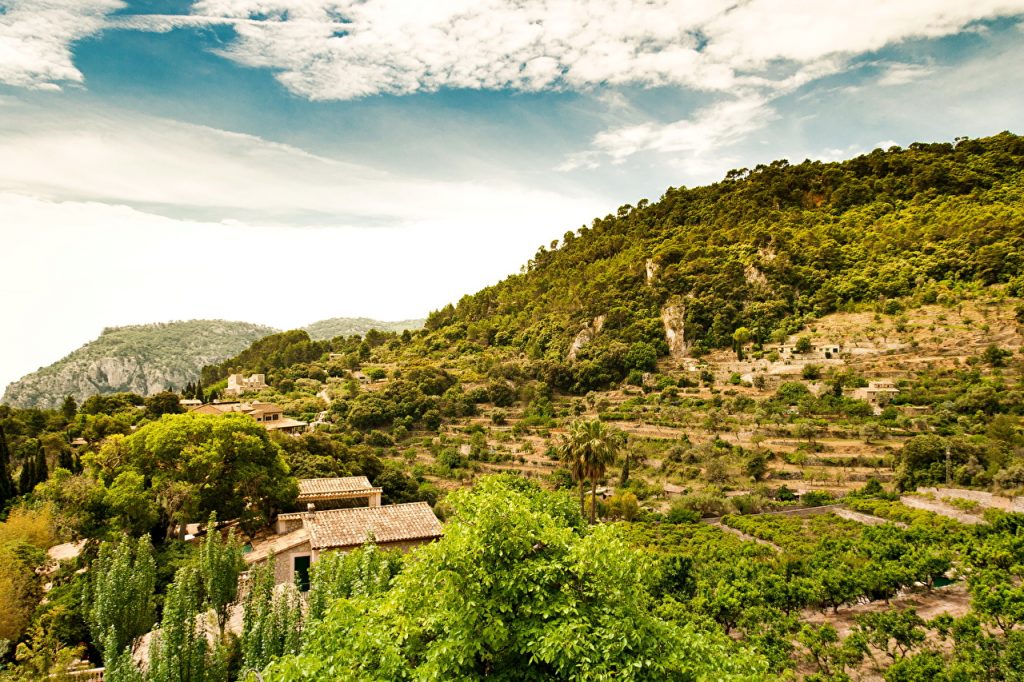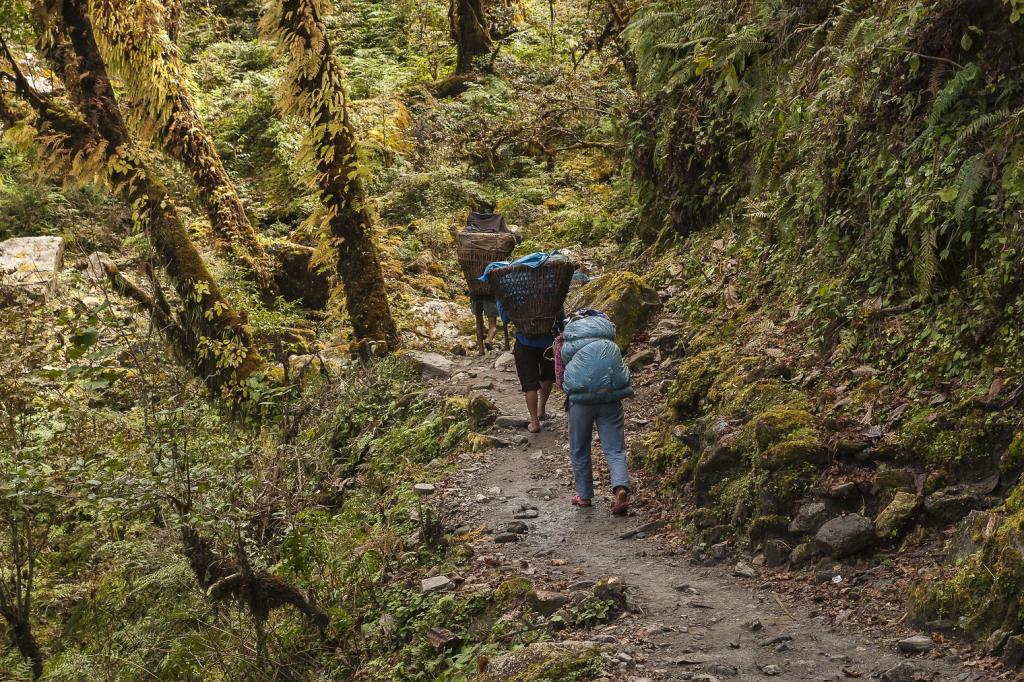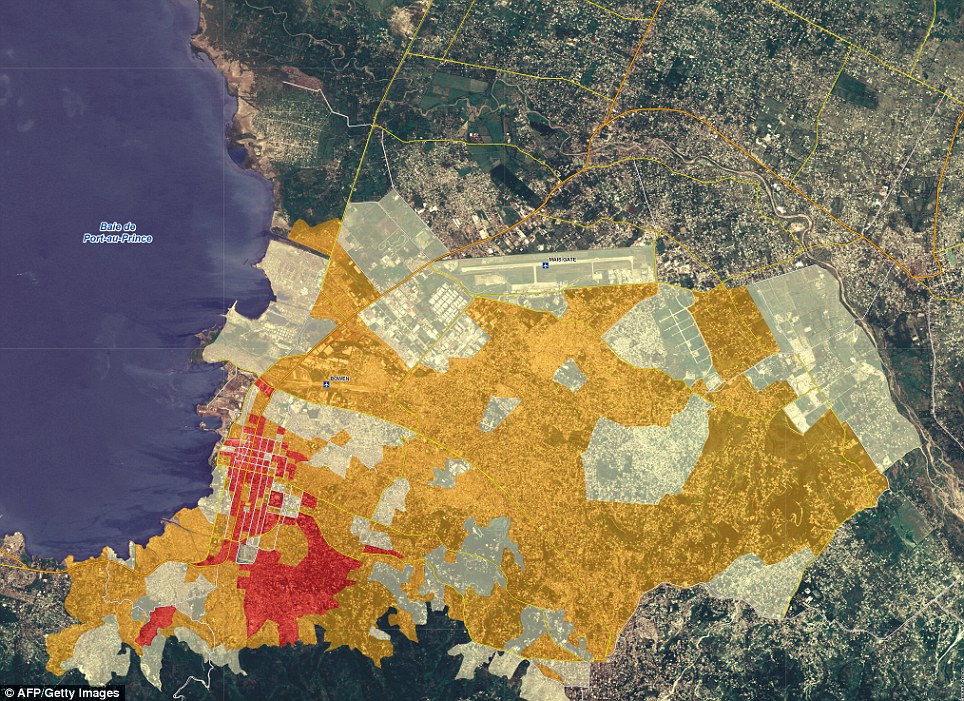Following Water’s Wisdom
featured image | Allec Gomes
The filmmakers tell the story behind the new documentary Water is Love: Ripples of Regeneration, now available for streaming. Subtitles are available in Portuguese, Spanish, Italian, German, French, Polish, Turkish, Greek, Arabic, Vietnamese and Chinese.
***
It seems that we don’t choose some projects we end up dedicating a fair amount of our lives to — they seem to choose us or, you might say, they’re simply inevitable. Making Water is Love: Ripples of Regeneration has been such a case. It’s a gesture of gratitude, a love letter to life, a manifesto for mending our broken ties with the animate world that simply couldn’t not be made.
Touched by water
There’s a ceremonial song that says, El agua cambia todo lo que toca, water changes everything it touches.
Our group of media makers met at an intentional community in Portugal that had been deeply transformed by water. Founded by a group of German radicals in the 1990s with the vision of creating a holistic example for a nonviolent culture, Tamera finds itself in the Alentejo, an extensive rural region once agriculturally abundant and now heavily hit by fast-paced desertification, water stress and rural exodus.
Despite a slightly better-than-average hydrology on the property, the Tamera community struggled to supply all inhabitants and guests with water in its early years. When I arrived at the community almost 20 years ago, the reality of desertification, water stress and, therefore, scarcity thinking was omnipresent and inescapable. Although we’d see heavy rains during winter, the long oppressive heat of summer would send groundwater levels successively lower year after year. We were worried: How could the community survive in a region so hopelessly degraded that scientists and politicians expected it to become uninhabitable in the course of a few decades?
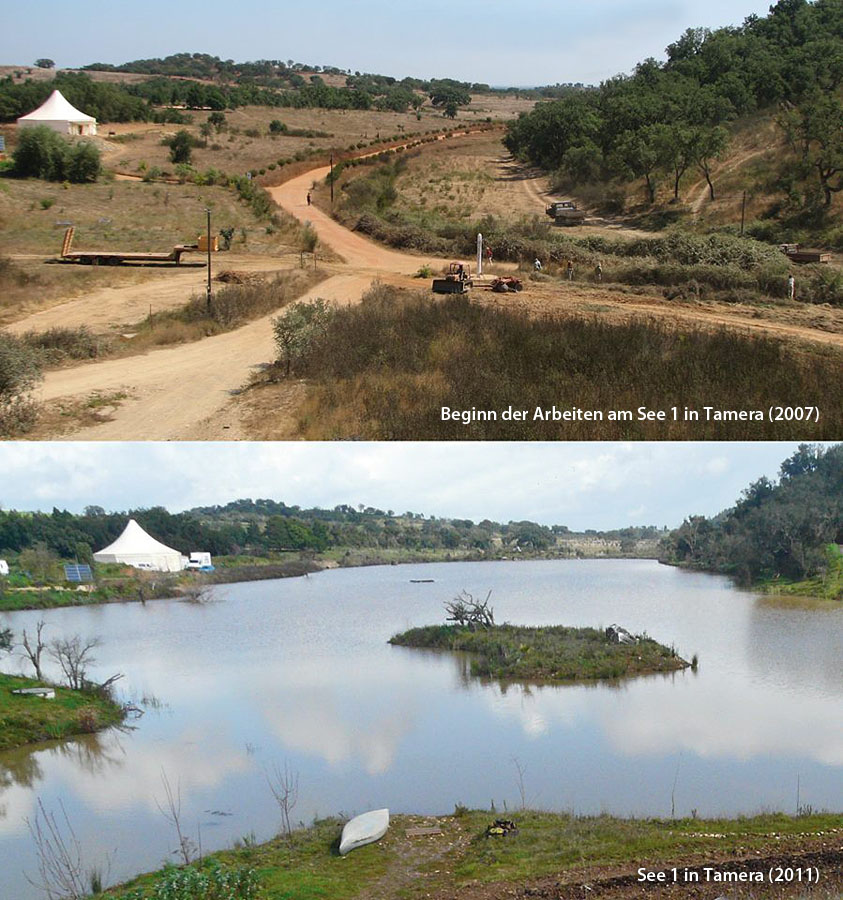
When Austrian “rebel farmer” Sepp Holzer visited the community in 2007, he only laughed at our anxious questions. “If you could see this landscape through my eyes,” he asserted confidently, “you’d have no worries about water and food.” At this alpine farm in Austria he had developed a revolutionary method of regenerative land and water management: Water retention landscapes consist of small decentralized earthen structures that stop rainwater run-off and filter it into the ground to recharge the local aquifer. Following his advice, we created a series of small dams, terraces, swales and temporary ponds to slow, spread and sink the heavy winter rains.
Within only a few years, our place transformed into a sanctuary of water abundance and biodiversity. Water tables rose, vegetation growth exploded and wildlife returned and quite naturally, our own mindset shifted from scarcity to abundance thinking.
Perhaps because the principle behind decentralized rainwater retention is so simple, it can be easy to miss just how far-reaching and potentially world-changing it may be.
“Water is climate”
The work of Michal Kravcik, Anastassia Makarieva, Antonio Nobre, Millan Millan and other scientists helped us understand what the experience at Tamera could mean for our broader collective struggle to survive the climate crisis.
In a nutshell, those renegade scientists suggest that climate action should focus on water and ecosystems, instead on carbon dioxide only.
Speaking in simple lay terms, we could make sense of water cycles and ecosystems as Earth’s natural climate regulating and cooling systems. Ecosystems, particularly forests and wetlands, maintain a stable water cycle by facilitating the evaporation and transpiration of water, which helps cool the atmosphere and moderate temperatures. Beyond cooling the atmosphere and sequestering carbon from the air, this evapotranspiration of plants creates small water cycles that are crucial to draw in clouds from over the seas. And healthy ecosystems in turn rely on their capacity to retain rain that falls in the ground, so that plants and all life has water even throughout dry spells. When water cycles are intact, ecosystems have the capacity to balance even strong rain events or extended dry spells.
Yet, when ecosystems get degraded—be it through deforestation, overgrazing, monoculture, pollution or urbanization—those balancing and regulating functions are lost. Drought and flood aren’t simply the results of missing or too much rain. Drought and flood happen when ecosystems can no longer retain rainwater and therefore water cycles collapse.
We understood that the extreme weather events now hitting the planet at ever greater frequency and intensity—whether Los Angeles’ beyond-devastating recent fires, drought in 40% of the world or catastrophic flood—aren’t just the result of the greenhouse effect. We could say climate breakdown really is water cycle breakdown.
But the story of water is also a hopeful one — because despite the massive ecological destruction, Earth has an enormous capacity for regeneration. Just as we did in Tamera, it’s possible to restore Earth’s natural climate regulating systems through decentralized rain water retention, reforestation and regenerative agriculture. We realized that in times of perpetual government failure to do something about the climate crisis, this good news needed to be spread, urgently.
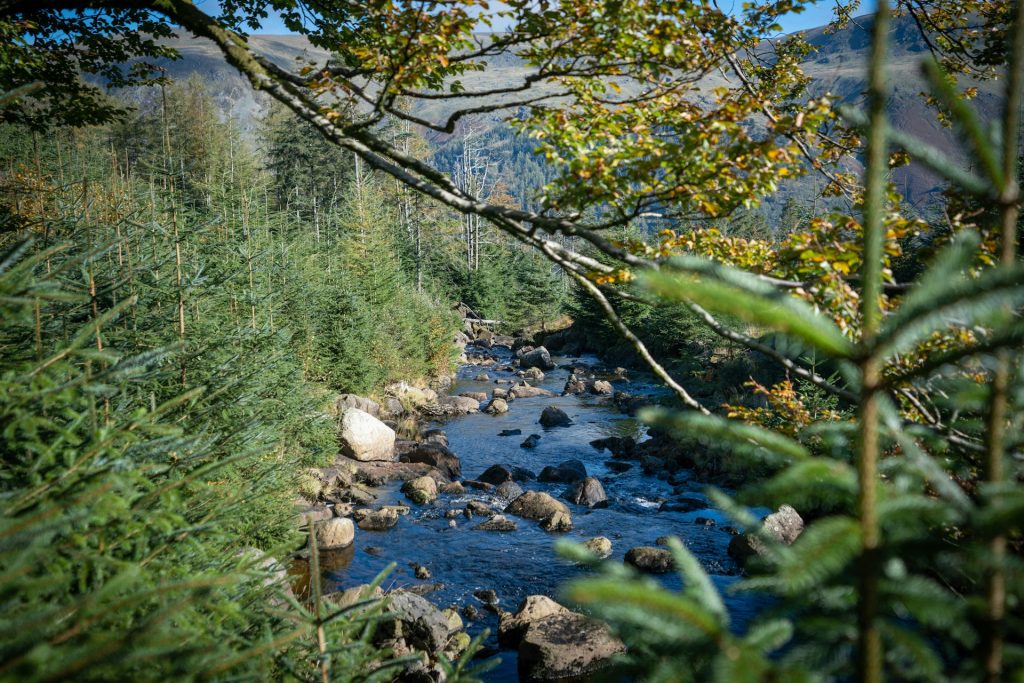
Understanding these correlations, we’ve further been perplexed to see how the awareness about water cycles continues to be excluded from most books, conferences and policies on climate change.
When Fridays for Future and Extinction Rebellion provoked a long overdue mass awakening about imminent climate breakdown and the urgency for radical climate action, we felt both hopeful and concerned: Hopeful because now finally the necessary ecological transformation of might take place but also concerned that conventional climate “solutions” would channel the new ecological awareness into mere tech fixes and top down centralized “green capitalist” schemes.
This was when we knew we had to make a film to bring water into the climate conversation.
As we started the production, we felt as though water started revealing itself to us through successive encounters with some of its ambassadors. And we just grew ever more breath-taken by what might become possible when we follow water and align ourselves with the wisdom of its flow.
Water Is Love | Official Trailer
A plan for global cooling
At the time, I had the honor to convene a remarkable circle of frontline activists, spiritual gangsters, visionary outliers and Earth healers, also known as the Defend the Sacred Alliance (DSA) in Tamera. The circle came together to fight the threat of offshore oil drilling in Portugal and was inspired to deepen the practice of “sacred” activism that Indigenous water protectors had so powerfully embodied at Standing Rock two years earlier. At the same time, a group of teenage climate activists met for a youth camp and the two groups intermingled occasionally.

One of the teenagers there was Tokata Iron Eyes, a Lakota youth activist from Standing Rock. Tokata’s fierce anti-extractivist activism from as early as 11 years on — in sharp contrast to most white environmental activists — has been rooted in a spiritual reverence for water, which she has no shame talking about.
She and the Indigenous elders at the gathering weren’t tired of pointing out: Saying that water is life isn’t just poetry or a nice metaphor. No, they insisted that water is quite literally alive. And acknowledging water as a living being and relating to water in this way has the potential to change everything.
When we speak of “ecology” in Western civilization, we often use a technical language that conceals its most basic principle: Ecosystems are communities of living beings and webs of relationships whose health and resilience relies on the strength of these precise relationships. The ecological emergency isn’t just a technical, economic or “environmental” issue; it is—as Standing Rock philosopher Vine Deloria Jr had pointed out some decades ago—a crisis of broken relationship.
We learnt that ecological regeneration can’t be reduced to mere methodology, even to talk about “solutions” is dangerous because the word suggests we could heal our world through mechanistic fixes. But true regeneration is always relational and emerges from engaging with particularities of each context and each relationship. There may be universal principles but no universal blueprints that we can arbitrarily copy and paste from one ecology to another. We found that the most effective regeneration projects are actually those who respect Indigenous knowledge systems and ask water what it wants.
A Agua E Um Ser | Song
"Water is the Bridge"
The perhaps best example of this is Rajendra Singh, better known as the “waterman of India” and one of The Guardian’s “50 people who could save the planet,” who has been part of DSA as well.
In the 1980s, Singh had started a remarkable grassroots movement in the desert state of Rajasthan. Based on tribal rainwater conservation techniques, they managed to replicate decentralized water retention structures at an almost unbelievable scale. The over 10,000 structures implemented since have profoundly transformed the region, greening thousands of square kilometers of desert and making 11 dried-up rivers flow again. Within 20 years, regional average temperatures came down by 2-3°C and rainfall became more balanced again. The regeneration of the landscape has allowed well over a hundred thousand people, whose livelihoods had been on the line before, to live in abundant water and food self-sufficiency.
It’s important to highlight that the transformation which Singh’s movement brought about has also been deeply cultural and political. Since Earth’s ecology works in networked, decentralized, distributed ways, ecological regeneration quite naturally leads, if allowed, to an economic and political decentralization of society as well. A shift away from capitalist centralization, accumulation and extraction and towards the kind of decentralized post-capitalist culture rooted in autonomous communities and bioregions, which Murray Bookchin envisioned with his “social ecology.”
But building such a system isn’t quite as romantic as it may sound. It’s a constant struggle, as capitalism will naturally try to crush people’s autonomy so it can continue exploiting nature. That’s why the Rajasthani watershed communities saw themselves compelled to create communal governance systems to make sure their renewed water abundance remained in a democratically stewardship and so that no private or state interest could take control of it.
The revolutionary potential of ecological regeneration in helping create a post-capitalist economy might be the reason why so few people dare to talk about it in mainstream climate conversations.
Rajendra Singh’s work inspired us to imagine a global climate regeneration movement that would establish water retention landscapes in bioregions around the world. We made Water is Love to help catalyze such a movement. We knew: If it was possible to share this possibility with people around the world and actually lift such projects off the ground, we could cool global temperatures and rebalance our disrupted climate in one generation, just as they did in Rajasthan.
Between now and April 22, the filmmakers are conducting live conversations with thought leaders, activists, scientists and others on Instagram. If you want to watch them, make sure to follow them: @waterislove.film.
Water is Love: Ripples of Regeneration is now available for streaming. Subtitles are available in Portuguese, Spanish, Italian, German, French, Polish, Turkish, Greek, Arabic, Vietnamese and Chinese.



